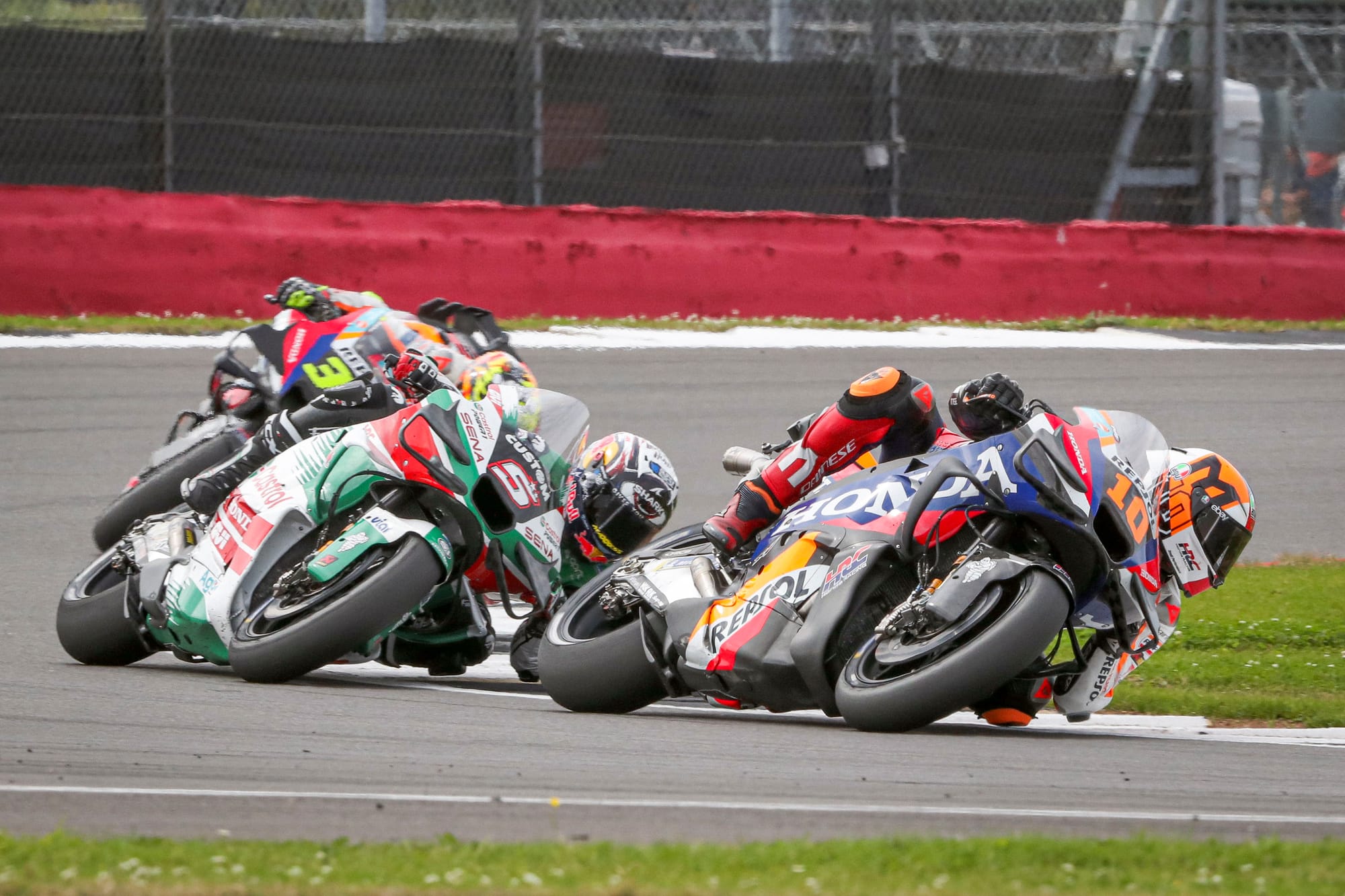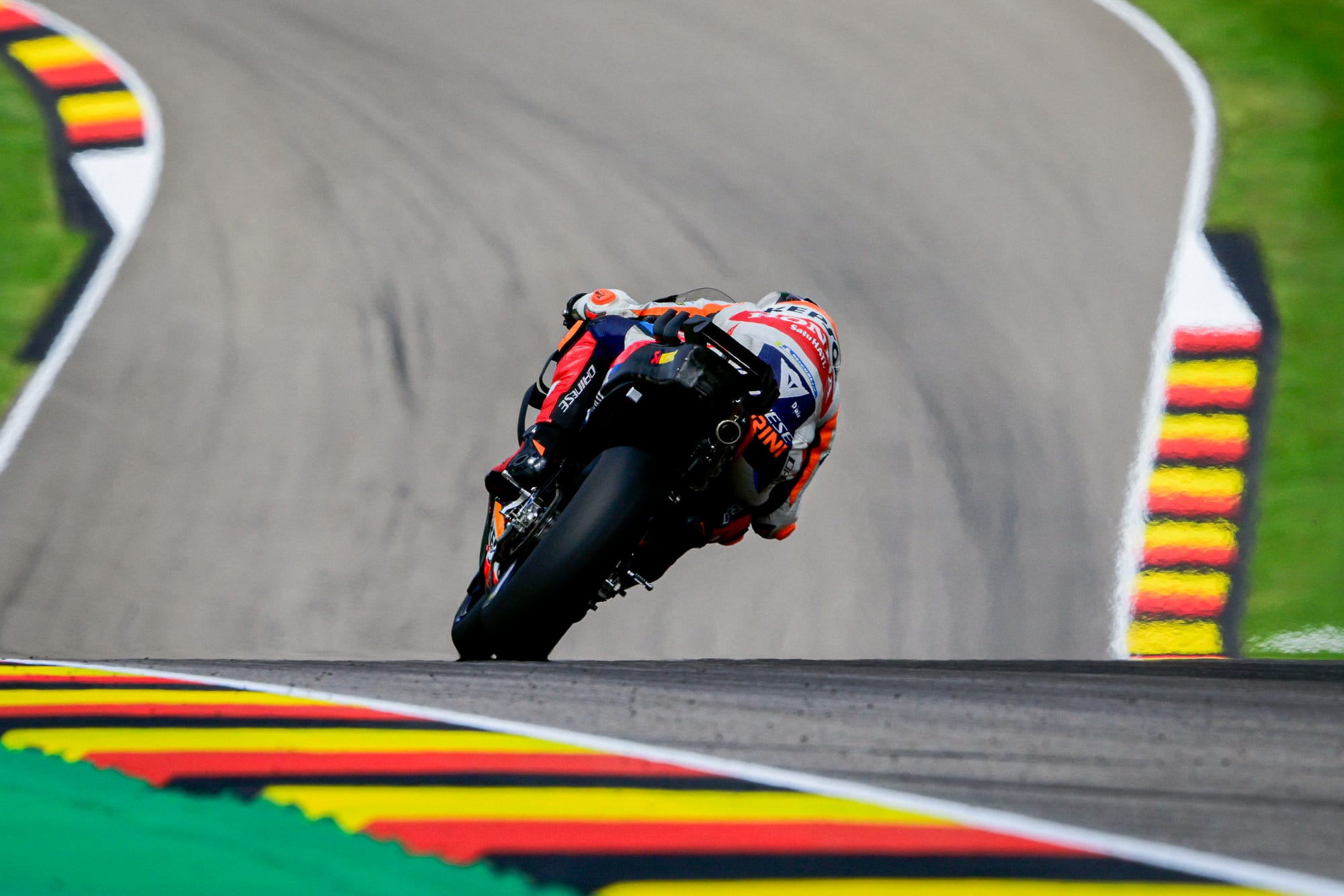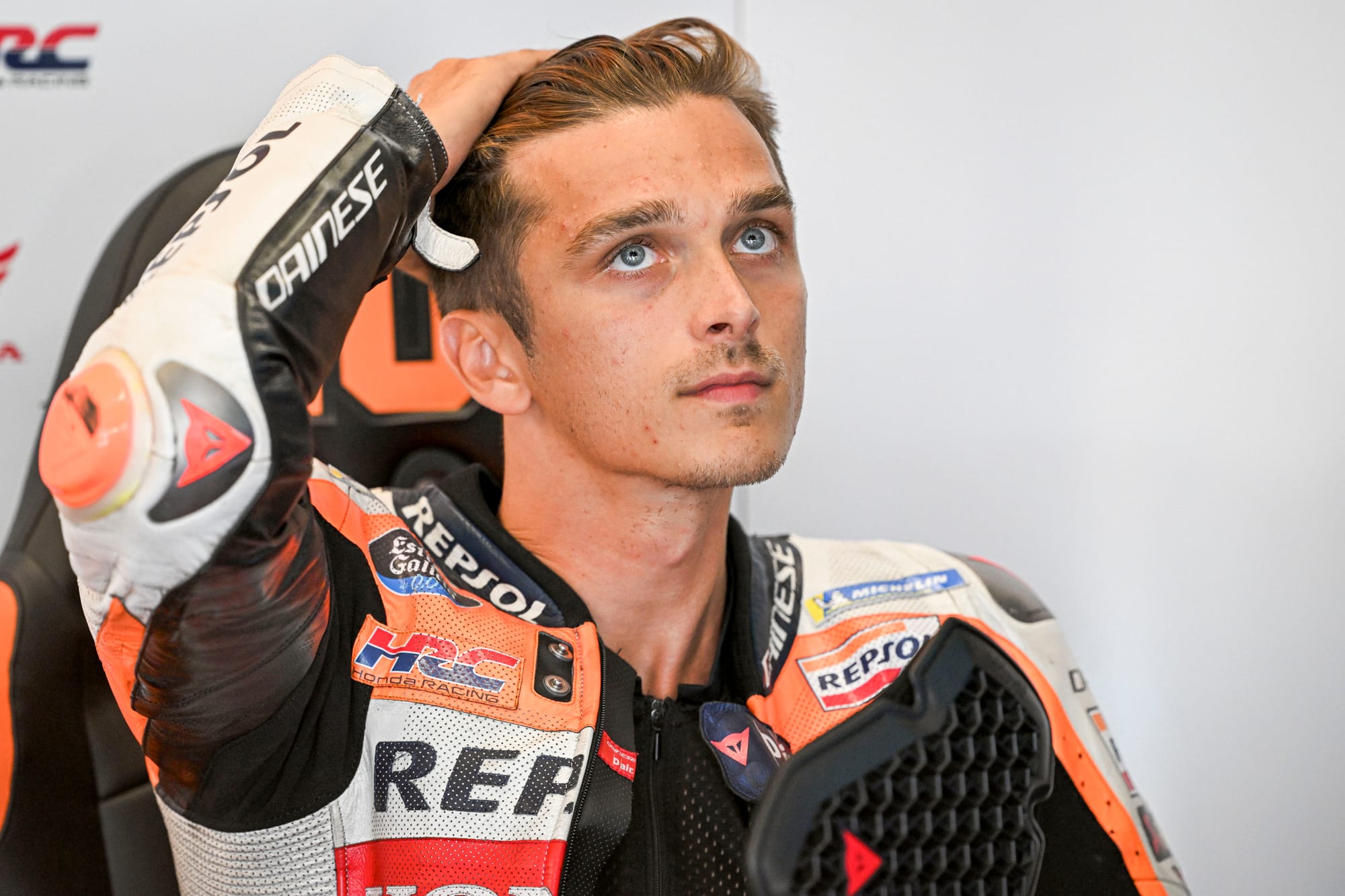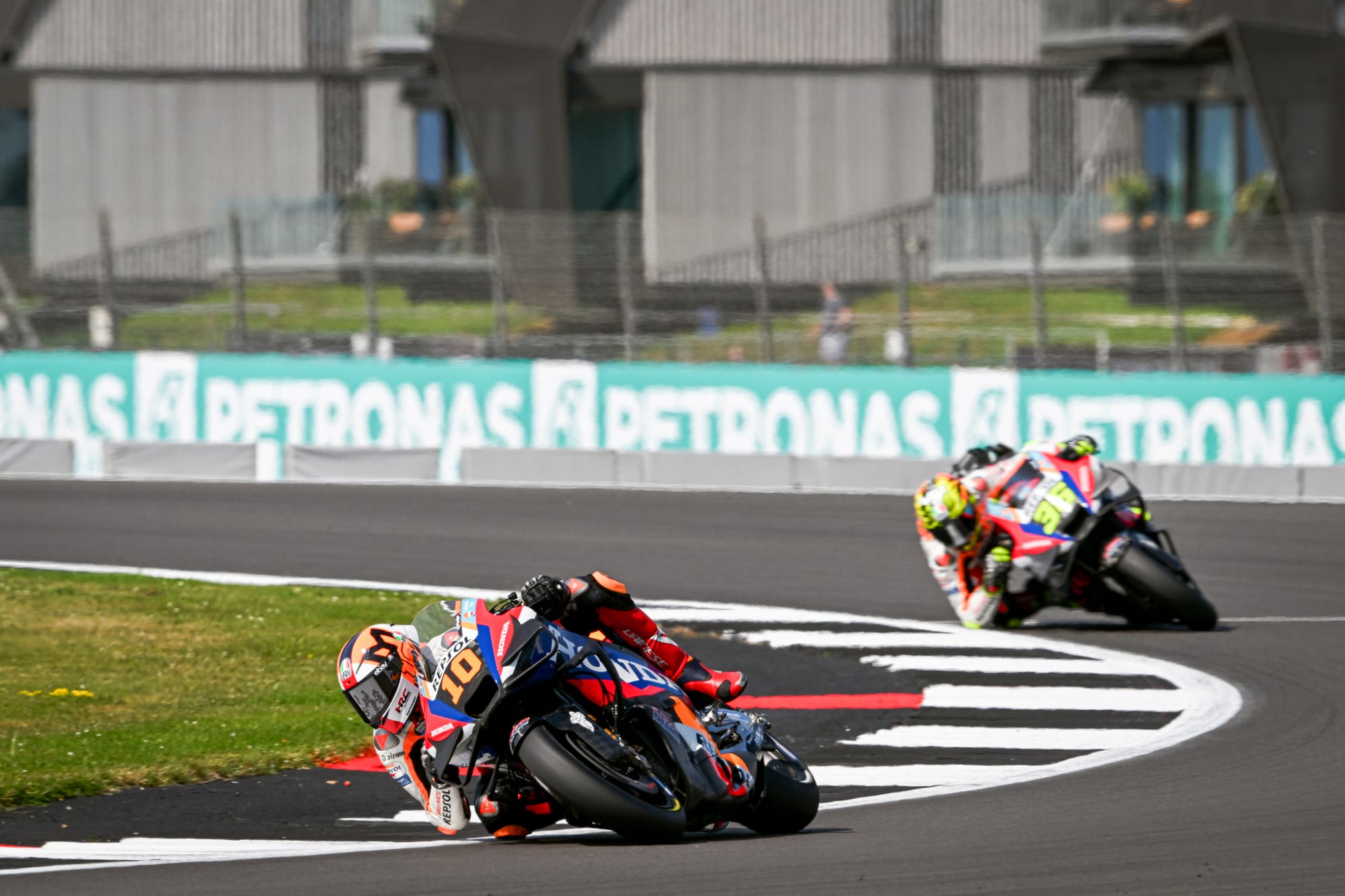If you want to improve your performance as a MotoGP rider now, moving to Honda is not the way to do it. In other words, no one signs with Honda and then ends up with better job opportunities when the deal is done.
This is true of Mir, and it was true of Pol Espargaro and Jorge Lorenzo before him, and must be a big part of the reason why long-term Honda project Ai Ogura has apparently chosen to build his future with Aprilia’s satellite team instead.
But if the bike isn’t there to do any heroic work right now, all its rider can do is avoid catastrophic damage to his future.
At the start of the year, it looked like a Honda rider was doing the same kind of damage, but now he appears to have righted the ship in a big way.
In terms of riders who have shown a clear upward trend in performance so far in 2024, Pramac Ducati’s Franco Morbidelli would be an obvious candidate to highlight – having started at a low point due to a brain injury and derailed pre-season, he has now reached genuine competitiveness. But it was unusual at first, and Morbidelli continues to struggle with performance at the weekend.
After Silverstone, it would be difficult to call him the most improved driver. But there is another driver under Valentino Rossi who fits that description.
In terms of pace, Luca Marini was nowhere to be found at the start of his first season as a Honda rider, having been brought in as a replacement for Marc Marquez – a certain level of pressure, to be sure, although no one pretended he would be a similar replacement.
However, during the first few races, Marini was regularly qualifying last or near last, struggling to match the lap times of his fellow Honda riders, beating them by double-digit seconds in races. The new Honda RC213V was soon revealed to be a miserable product, but Johann Zarco, Mir and even the less consistent Takaaki Nakagami were having a noticeably less miserable time than Marini. Test rider Stefan Bradl was also making Marini uncomfortable on the road.
To illustrate the situation, let’s look behind the scenes for a second. The original version of the championship chart had 22 rows built in, for both full-time riders. Dani Pedrosa’s match points as a winning card should have made that unacceptable – but the 22-row template was still good enough to use for several rounds after that, without too much worry, because Marini never looked like scoring points.
He was now in that picture, with just one point – earned through a post-race tyre-pressure penalty for Augusto Fernandez at the Sachsenring. He lost what would have been a second point through a post-race tyre-pressure penalty at Silverstone. Either way, Marini’s behaviour made it clear he was not at all bothered.
A Honda with two points means zero points, five points, or 10 points at the moment. And all of these numbers are the same: they reflect pure statistical variation in a group of cars that have to rely on the generosity of competing manufacturers for points, or their own accidents, or their failure to score any points at all.
At least the points accurately reflected the fact that Zarco and Mir outperformed Marini in terms of performance. And for all Marini’s selling points – a smart rider brought in from Ducati to guide development and help Honda find the way rather than chasing meaningless single-digit points – the reality of the performance gap was uncomfortable.
After 10 rounds of a 20-round season, this is no longer true.
Marini seemed to be on the same level as Mir and Zarco around Assen at the end of June, but then he fell behind on two completely different tracks: the Sachsenring and Silverstone.

There was a lot of talk in the second weekend about whether Marini and Mir were on a par with Zarco – who uses a different engine spec, “a bit more powerful but very difficult to drive” – and there was so much mixing and matching of Honda specs that any comparisons there had to come with big asterisks. But Marini was right on the mark.
“I have made a big step in my driving style,” he said. “I have tried to adapt a lot to what Honda requires in order to be fast.
“Because it’s really difficult, when you come from another manufacturer, at the beginning when you just go with your instincts, you do the same things you did the year before. But maybe that’s not the best way to perform with our bike at the moment.

“I’ve now reached a very good level in this, and I can use the bike to its strongest points, and try to avoid the weak points. But the bike has changed a lot as well.
“We have made a huge improvement with this setup. Now the bike is more… not only easier to ride, but I would say more fun.”
“The concept of a bike that I have in mind when I want to ride it is now closer to reality. [to what we now have]”.”

Meanwhile, Marini was sending indirect hints that he was leading the development direction.
“Every time we try something [new]We try very hard, and when I’m sure something is working and it’s better, things [in use] The things I had before are gone. I don’t see any point at the moment in changing so many things and so many pieces every time.
“For me, when it becomes clear that one engine is better than the other, I keep working on it and try to develop that engine better than the other.
“Now everyone is finally coming to me. So I think this will also help Honda to have more clear information, just focus on one thing, and be faster.”
Mir, Zarco and Nakagami will likely have something to say about this, but Marini’s words carry more weight than before – given the performance he is now achieving while maintaining a lower crash rate than his peers.
He started well, but making up the gap was never assured. Espargaro’s form with Honda was no better than in pre-season and early in the season. Mir arguably ended up at the same level he was when he first started learning the bike. Alex Rins, now at Yamaha, peaked early in his only season with Honda last year and then any prospect of progress was ruined by injury.

Honda riders tended to stagnate. Marini did not. At the same time, he remained enthusiastic and precise in his public message, and all indications suggest that he still has the analytical mind that Honda prioritized to fill the void left by Marquez.
Marini and Honda still have a lot of work to do, and with his Honda contract expiring at the end of next year, his rivals will be fighting for his seat. But that trend could be broken, and with a bang – it’s much easier to go from 50 seconds to 30 seconds than from 30 seconds to 15 seconds.
But Marini is improving – clearly and visibly improving – and in Honda’s current state that’s all you can ask for.




